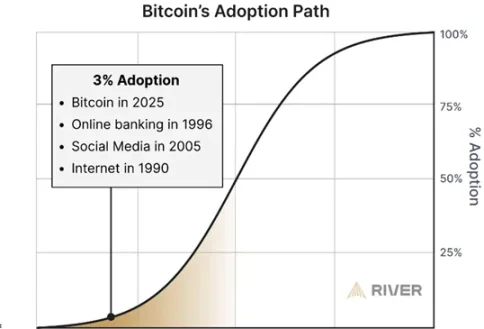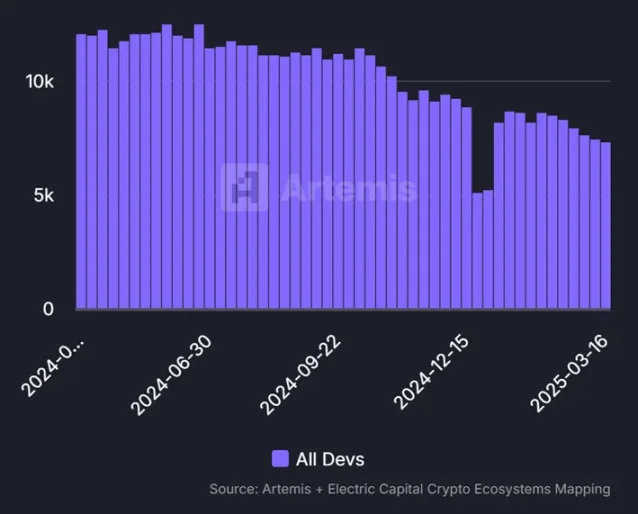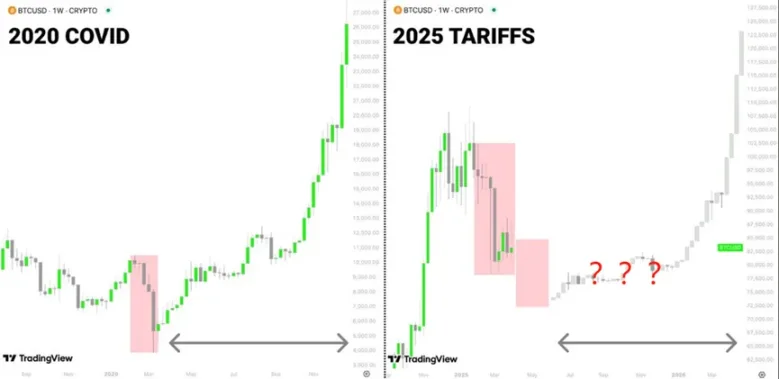Written by: Blockchain Knight
"Only when the tide goes out do you discover who's been swimming naked," Buffett's quote probably best describes the current Crypto market. Over the past period, one could occasionally hear or see news about XXX "leaving the circle," and such news is more of an expression of the industry's current state rather than complaints or grumbling.
As for why these people choose to leave the industry, the author roughly tracked a few main reasons.
First, the most common reason is the dismal market performance or changes brought by the market, forcing some people to temporarily leave the industry to seek "new opportunities." Second, over the past year or two, Web3 has been in a somewhat unfavorable "unhealthy" growth state, and some value creators choose to leave this field because they don't see real value growth. Additionally, some people see the rise of AI and believe Web3 has become a thing of the past, and they will pursue new blue ocean markets.
Of course, when these reasons are refined to individual levels, the differences are significant, but these reasons cannot transform from partial to overall, as most people in the market still choose to wait and see or continue to build, because this industry, which has been developing for over a decade, is not facing such difficulties for the first time.
It's just that some people leaving the industry might be influential KOLs, so it seems to affect many people's mindset. However, the author believes that the current stage is truly a test for Builders. Putting aside these surface-level restlessness, we need to see more about the industry's changes or things that have not yet been transformed, and will briefly describe this from the following 3 aspects.
Has the Web3 Industry Entered the Red Ocean from the Blue Ocean?
According to a research report published by BTC financial services company River in March, currently, only 4% of the global population holds BTC, with the highest BTC holding ratio being in the United States, where about 14% of people hold BTC. From the development stage, the current BTC adoption rate is equivalent to the internet in 1990 or mobile social media in 2005.

Through this simple data analysis, we can see that the current digital asset adoption rate, led by BTC, is still in the early stage, far from being a red ocean market. Even from the industry's influence perspective, traditional financial giants like BlackRock and Fidelity have just entered the market. Would they foolishly come in as bag holders?
From logical and data analysis, we must admit that if digital assets are the future development direction or Web3 is the intersection of the internet and AI, then this race has most likely just run from the starting point to the midpoint, with a long way to go.
Is the Web3 Market Left with Only Exaggerated MEME Narratives?
Of course, for many value creators in this industry, the most criticized aspect over the past year is naturally the explosion of MEME, because MEME attracted too much attention and caused many who entered the industry to experience a cleansing, even losing confidence in the industry. However, as the author previously said in Weekly, MEME is evolving, needing a new revival after the bubble, and this growth might bring value to the industry.
Secondly, we should not only see surface-level hot spot changes; builders are still building, and value projects are still seeking their breakthroughs. By looking at the change in active developers over the past year, despite experiencing a decline, they remain at a high level.

Although the market currently seems quiet and lacks a major narrative like DeFi from the previous cycle, looking back from the present always seems calm and full of opportunities, while looking at the future from the present feels less confident. But isn't this the law of development and change for anything?
Even looking back at the Web3 industry in 2018, it was extremely terrible, perhaps dozens of times worse than now, but this did not prevent the subsequent big explosion. We need time and patience to wait for the process from quantitative to qualitative change.
Will the Web3 Market Continue to "Fall Endlessly"?
Lastly, naturally, it's about price. Over 90% of people feel this cycle is very different from previous cycles and lacks similarity, so many "drawing conclusions based on fixed perspectives" predictions have become cannon fodder. However, if the concept of cycles is still valid, we are most likely still in this cycle, just without the previous crazy universal rise.

Recently, due to GS issues, US stocks plummeted, evaporating nearly $6.5 trillion in market value within two days. The three major US stock indices recorded their largest two-day and weekly declines since March 2020, which also drove extreme market movements in the global financial market. Whether this volatility can improve in the short term remains to be cautiously observed.
So, when BTC has pulled back nearly 30%, and the financial market encounters a once-in-several-years major change, can the entire Crypto market remain unscathed? Perhaps this is a difficult question to answer.
But our earliest economist, also known as the "God of Wealth" Fan Li, has a classic quote worth savoring: "When something becomes extremely valuable, it turns worthless; when something becomes extremely worthless, it turns valuable; when something is extremely valuable, it's like excrement; when something is worthless, it's like a pearl." Perhaps we are now in a subtle moment of "viewing everything as excrement."
Will BTC ultimately reach $500,000 per coin? Saying BTC would reach 1 million per coin 7 years ago would have sounded like a joke, but now it seems not far off. Living in the present means facing reality, but facing the future requires cautious optimism, always on the road, always Building.







